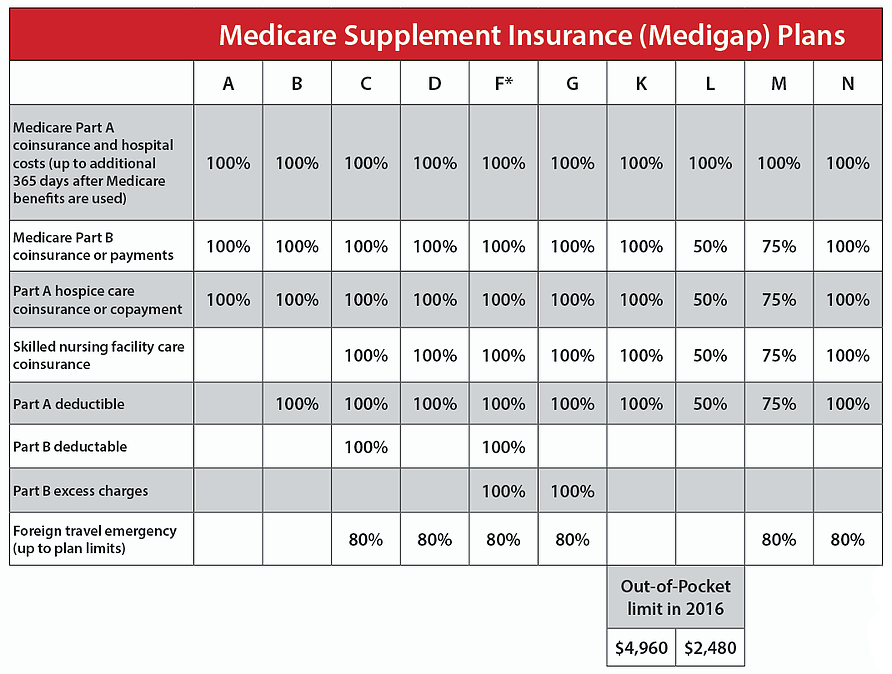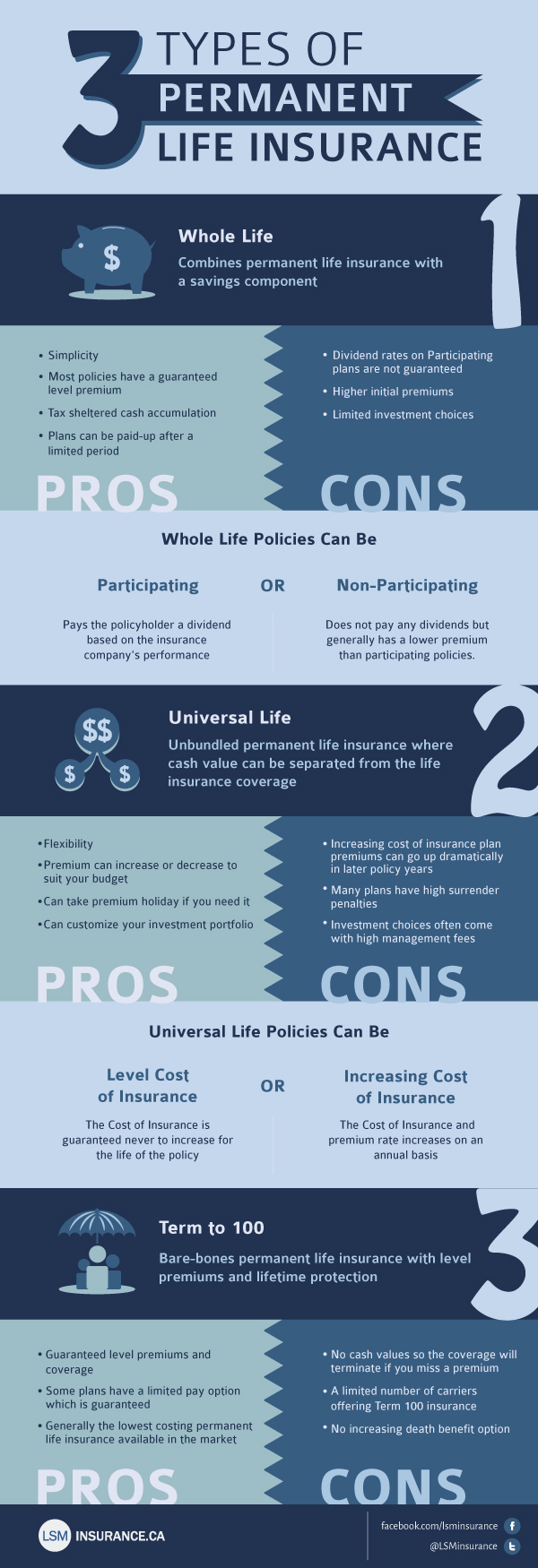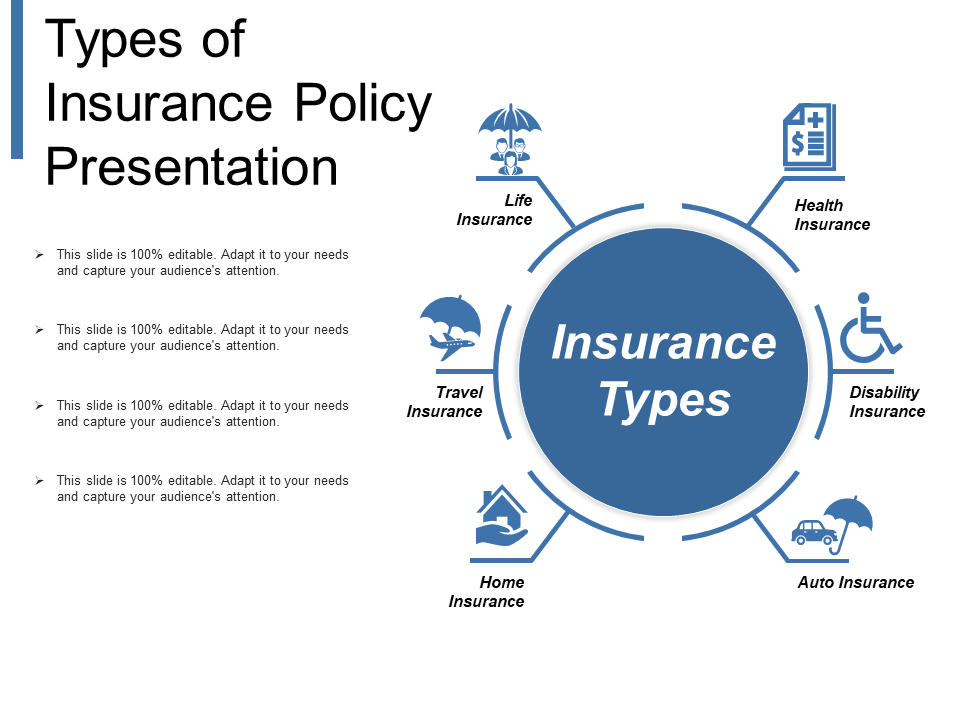Fredda Hornstrom
Saturday, April 2, 2022
Monday, February 21, 2022
Can I Lose 3Kg In 3 Weeks
The primary goals of behavioral strategies for weight control are to increase physical activity and to reduce caloric intake by altering eating habits (Brownell and Kramer, 1994; Wilson, 1995). A subcategory of behavior modification, environmental management, is discussed in the next section. Behavioral treatment, which was introduced in the 1960s, may be provided to a single individual or to groups of clients. Typically, individuals participate in 12 to 20 weekly sessions that last from 1 to 2 hours each , with a goal of weight loss in the range of 1 to 2 lb/wk . In the past, behavioral approaches were applied as stand-alone treatments to simply modify eating habits and reduce caloric intake. Increased physical activity is an essential component of a comprehensive weight-reduction strategy for overweight adults who are otherwise healthy.
The availability of exercise facilities at military bases can reinforce exercise and fitness programs that are necessary to meet the services' physical readiness needs generally, and for weight management specifically. For a given individual, the intensity, duration, frequency, and type of physical activity will depend on existing medical conditions, degree of previous activity, physical limitations, and individual preferences. Referral for additional professional evaluation may be appropriate, especially for individuals with more than one of the above extenuating factors. The benefits of physical activity (see Table 4-1) are significant and occur even in the absence of weight loss (Blair, 1993; Kesaniemi et al., 2001).
It has been shown that one of the benefits, an increase in high-density lipoproteins, can be achieved with a threshold level of aerobic exercise of 10 to 11 hours per month. However, the long-term effectiveness of these diets is somewhat limited. Approximately 40 to 50 percent of patients drop out of the program before achieving their weight-loss goals.
In addition, relatively few people who lose large amounts of weight using VLCDs are able to sustain the weight loss when they resume normal eating. In two studies, only 30 percent of patients who reached their goal were able to maintain their weight loss for at least 18 months. Within 1 year, the majority of patients regained approximately two-thirds of the lost weight (Apfelbaum et al., 1987; Kanders and Blackburn, 1994). In a more recent study with longer followup, the average regain over the first 3 years of follow-up was 73 percent.
However, weight tended to stabilize over the fourth year. At 5 years, the dieters had maintained an average of 23 percent of their initial weight loss. At 7 years, 25 percent of the dieters were maintaining a weight loss of 10 percent of their initial body weight (Anderson et al., 1999, 2001). The largest amount of weight loss occurred early in the studies (Ditschuneit et al., 1999; Heber et al., 1994). One study found that women lost more weight between the third and sixth months of the plan, but men lost most of their weight by the third month (Heber et al., 1994). All of the studies resulted in maintenance of significant weight loss after 2 to 5 years of follow-up.
Hill's review of Rothacker pointed out that the group receiving meal replacements maintained a small, yet significant, weight loss over the 5-year program, whereas the control group gained a significant amount of weight. Active intervention, which included dietary counseling and behavior modification, was more effective in weight maintenance when meal replacements were part of the diet (Ashley et al., 2001). Meal replacements were also found to improve food patterns, including nutrient distribution, intake of micronutrients, and maintenance of fruit and vegetable intake. For previously sedentary individuals, a slow progression in physical activity has been recommended so that 30 minutes of exercise daily is achieved after several weeks of gradual build-up. This may also apply to some military personnel, especially new recruits or reservists recalled to active duty who may be entering service from previously very sedentary lifestyles. The activity goal has been expressed as an increase in energy expenditure of 1,000 kcal/wk (Jakicic et al., 1999; Pate et al., 1995), although this quantity may be insufficient to prevent weight regain.
For that purpose, a weekly goal of 2,000 to 3,000 kcal of added activity may be necessary (Klem et al., 1997; Schoeller et al., 1997). Thus, mental preparation for the amount of activity necessary to maintain weight loss must begin while losing weight . Very-low-calorie diets were used extensively for weight loss in the 1970s and 1980s, but have fallen into disfavor in recent years (Atkinson, 1989; Bray, 1992a; Fisler and Drenick, 1987). FDA and the National Institutes of Health define a VLCD as a diet that provides 800 kcal/day or less. Since this does not take into account body size, a more scientific definition is a diet that provides 10 to 12 kcal/kg of "desirable" body weight/day .
The primary goal of VLCDs is to produce relatively rapid weight loss without substantial loss in lean body mass. To achieve this goal, VLCDs usually provide 1.2 to 1.5 g of protein/kg of desirable body weight in the formula or as fish, lean meat, or fowl. Fisler and Drenick reviewed the literature and concluded that about 70 g/day of protein is needed to ensure that nitrogen balance is achieved within a short period of time on a VLCD. The most important component of an effective weight-management program must be the prevention of unwanted weight gain from excess body fat. The military is in a unique position to address prevention from the first day of an individual's military career.
There is significant evidence that losing excess body fat is difficult for most individuals and the risk of regaining lost weight is high. Success in the promotion of weight loss can sometimes be achieved with the use of drugs. Almost all prescription drugs in current use cause weight loss by suppressing appetite or enhancing satiety. One drug, however, promotes weight loss by inhibiting fat digestion. To sustain weight loss, these drugs must be taken on a continuing basis; when their use is discontinued, some or all of the lost weight is typically regained. Therefore, when drugs are effective, it is expected that their use will continue indefinitely.
For maximum benefit and safety, the use of weight-loss drugs should occur only in the context of a comprehensive weight-loss program. In general, these drugs can induce a 5- to 10-percent mean drop in body weight within 6 months of treatment initiation, but the effect can be larger or smaller depending on the individual. As with any drug, the occurrence of side effects may exclude their use in certain occupational contexts. A nutritionally balanced, hypocaloric diet has been the recommendation of most dietitians who are counseling patients who wish to lose weight.
This type of diet is composed of the types of foods a patient usually eats, but in lower quantities. There are a number of reasons such diets are appealing, but the main reason is that the recommendation is simple—individuals need only to follow the U.S. In using the Pyramid, however, it is important to emphasize the portion sizes used to establish the recommended number of servings. For example, a majority of consumers do not realize that a portion of bread is a single slice or that a portion of meat is only 3 oz.
The efficacy of individual interventions is poor, and evidence regarding the efficacy of combinations of strategies is sparse, with results varying from one study to another and with the individual. Recent studies that have focused on identifying and studying individuals who have been successful at weight management have identified some common techniques. These include self-monitoring, contact with and support from others, regular physical activity, development of problem-solving skills , and relapse-prevention/limitation skills. Many individuals and companies promote the use of dietary fiber supplements for weight loss and reductions in cardiovascular and cancer risks. Numerous studies, usually short-term and using purified or partially purified dietary fiber, have shown reductions in serum lipids, glucose, or insulin (Jenkins et al., 2000).
Long-term studies have usually not confirmed these findings (LSRO, 1987; Pasman et al., 1997b). Such diets are often lower in fat and higher in CHOs. A significant part of weight loss and management may involve restructuring the environment that promotes overeating and underactivity. The environment includes the home, the workplace, and the community (e.g., places of worship, eating places, stores, movie theaters).
Environmental factors include the availability of foods such as fruits, vegetables, nonfat dairy products, and other foods of low energy density and high nutritional value. Busy lifestyles and hectic work schedules create eating habits that may contribute to a less than desirable eating environment, but simple changes can help to counter-act these habits. Recent studies of individuals who have achieved success at long-term weight loss may offer other insights into ways to improve behavioral treatment strategies. However, this population was self-selected so it does not represent the experience of the average person in a civilian population. Because they have achieved and maintained a significant amount of weight loss , there is reason to believe that the population enrolled in the Registry may be especially disciplined.
As such, the experience of people in the Registry may provide insight into the military population, although evidence to assert this with authority is lacking. Next is your diet, a healthy ballanced diet is not a weight loss diet. It becomes a weight loss diet when you also reduced the calorie intake of that diet to less then what you burn inorder to lose wight every day constantly over a 7 day period.
Firstly, I would recommend you speak to your GP; there are some conditions such as Thyroid disorders that can make it very difficult to shed the kilos, even when we are exercising and eating well. Secondly, I would start a diet diary, recording everything you eat for a week and the time of your meals. When analyzing a diet diary we look at what foods you are eating at different times of the day, the volume of food consumed and importantly the amount of meals you are consuming in a given day. The best meal plan for weightloss involves a diet of 6 small meals a day, spaced out in two hour increments. There is plenty of information regarding what foods you should eat and those to be avoided but ensure that you are consuming enough fresh fruit and vegetables to fulfil daily requirements or you will begin to feel fatigued. Try looking up the "raw food pyramid" as it is a good indication of the food you should eat.
Include proteins at every meal, but only a serve that is smaller than your palm. Dr Neha says, A high protein, moderate carbohydrate and low fat diet is the most effective diet plan to lose weight in 15 days. It is important to maintain a correct balance between proteins, carbohydrates and fats to lose weight in a healthy manner.
With a high protein diet, maximum weight loss in the short period of 15 days is ensured and moderate carbohydrates are essential for fuelling the brain and muscles. The low fat diet fulfils the body s requirement of fatty acids for various metabolic processes. Do you want to lose weight in 15 days but wondering about the effectiveness of the weight loss plan?
Well, our expert Dr Neha Sanwalka, nutritionist and dietician, explains that a person can lose around 2-3 kg of weight in a healthy way in 15 days. Additionally, it doesn t involve strenuous exercises or fasting nor do you feel exhausted at the end of the day. All you need to do is eat healthy and exercise regularly to lose weight in the stipulated time. Here s a quick-guide to help you out in shedding to extra kilos within 15 days. Body weight, body fat, energy metabolism, and fat oxidation are regulated by numerous hormones, peptides, neurotransmitters, and other substances in the body. Drug companies are devoting a large amount of resources to find new agents to treat obesity.
Neuropeptide Y and galanin are central nervous system neurotransmitters that stimulate food intake (Bray, 1998; Leibowitz, 1995), so antagonists to these substances might be expected to reduce food intake. Beta-3 adrenergic receptor agonists reduce body fat and increase lean body mass in animals (Stock, 1996; Yen, 1995), but human analogs have not been identified that are effective and safe in humans. In addition, the restriction of CHO intake leads to the loss of glycogen and marked diuresis (Coulston and Rock, 1994; Miller and Lindeman, 1997; Pi-Sunyer, 1988). Thus, the relatively rapid initial weight loss that occurs on these diets predominantly reflects the loss of body water rather than stored fat.
This can be a significant concern for military personnel, where even mild dehydration can have detrimental effects on physical and cognitive performance. For example, small changes in hydration status can affect a military pilot's ability to sense changes in equilibrium. Australian Dietary guidelines as well as WW's program guidelines, recommend a safe weight loss rate of 500g-1 kg a week. You may lose more in the first few weeks, but this should even out over time. Losing weight too quickly isn't good for your health, and can actually make it harder for you to sustain the weight loss long term. Losing weight too quickly can also pose a risk to your overall health including developing gall stones, irregular heart beat and excessive loss of lean muscle mass.
Following a 'quick-fix' approach to weight loss also doesn't help you work on the root cause of your weight gain in the first place. Weight loss isn't just about what you eat and the activity you do – it's about your mindset and the way you think too. Shifting your mindset takes time, that's why a slow and steady approach will turn about to be the most effective in the long run.
After realising this, I did a little bit of research online particularly about cutting down my carbohydrate intake. I researched on The Live Strong and Mayo Clinic Websites, who provide scientific and medical views on nutrition and dietary requirements. After reading a while, I found something called Ketosis, which is sometimes caused by a lower carbohydrate diet. Ketosis is ultimately a metabolic state where your body starts to break down stored fat and to burn it for energy. It also said that this should not be done in longer term dieting – so I thought I would try it for 14 days to see if it was carbs that was the cause of my weight gain.
To lose 5 kg in a week, you'll need to follow a strict diet and exercise regimen. Avoid foods that are high in carbohydrates, like bread, pasta, and rice. Instead, opt for lean proteins like chicken and seafood in addition to plenty of fruits and vegetables. Drink at least 64 ounces of water daily to stay hydrated and to help you feel full longer, and get minutes of a moderate activity like running or swimming every day. Whether you have a special occasion coming up or you just want to feel healthier, sometimes you might want to lose weight fast.
Losing 5 kilograms in one week is a difficult goal to reach, but you may be able to do it with the right diet and exercise strategies. However, losing weight slowly will make it easier to maintain your weight loss. A balanced diet together with regular daily exercise will enable to make lifestyle changes and attain this goal. Examples of menus on my website will help you with meal planning.
You have to watch your portion sizes and ensure you sit down and eat regular meals instead of snacking and picking. Nutrition needs vary according to individual metabolic rates and other factors such as activity levels and health status. I suggest you consult a dietitian to personalise a balanced eating pattern for your individual needs. Typically at such a consultation, the dietitian will weigh you, and ask about your medical history, eating and exercise habits, lifestyle patterns and history of weight. They will then devise an individual eating plan and organise future consultations to track your progress and make adaptations to your present meal plan when necessary.
Research has shown that eating a low-carb diet can help you lose weight fast. In fact, a short-term decrease in carb intake may help reduce water weight and bloating. Hence, many people go low-carb when trying to slim down. Eating plenty of protein, particularly lean protein sources, is linked to increased metabolism and decreased appetite, which may effectively aid weight loss.
All you need to do is make sure that half your plate is loaded up with low-energy salads and vegetables, and as such reduce the portions of protein and carbohydrate on your plate. Think a veg-rich juice with breakfast, or eggs with extra vegetables; a salad or soup with a lunch wrap or sandwich and then less meat and more roasted vegies with your evening meal. Ultimately you are eating more overall, but fewer kilojoules, which is a great way to diet. Other eating patterns may not result in an actual calorie deficit, which is necessary for weight loss. You may find that despite sticking to a specific diet, you are not losing weight as expected. Some diets, such as intermittent fasting or keto, may claim to increase weight loss without the need to count calories.
But in reality, these diets only work because they can create a caloric deficit. If you are not in a deficit, these diets will not lead to weight loss. After two weeks I lost 12lb , which I was shocked at! This was probably too fast a way to lose weight and I don't want to advocate this as a long-term technique.
I have now introduced some carbs back into my diet and I am trying to slowly manage my weight loss to 1-2lb per week. I usually don't recommend calorie counting, as it can be counterproductive to maintaining a healthy, balanced approach to eating. This is one of the reasons why my online weight loss program has been specially designed so you don't have to think about calories. However, if you're not following a specific weight loss eating plan, and you need to lose the last couple of kilos then it's going to be important to locate areas of your diet where you can cut out unnecessary calories. No wonder, staying in shape seems like a daunting task as it is not just sacrificing on your favourite delicacies rather it calls for a holistic change, which also calls for regular workout or brisk walk.
Monday, January 10, 2022
What Kind Of Insurance Is Umr
How To Check Umr Insurance Claims are administered by UMR, a division of United Healthcare, and UHC providers serve as in-network providers for participants. The prescription portion of the university's Medical Coverage Plan is administered by MedImpact. Both UHC and MedImpact offer a nationwide network of providers. Your out-of-pocket costs for eligible expenses are capped annually at $4,000 for an individual or $8,000 for a family. Refer to the coverage chart below for additional coverage details.
The district contributes to a Health Reimbursement Account for each employee who enrolls in the UMR Choice Plus Planto assist in paying a portion of your deductible. Yes, most self-fund employee health plans administered by UMR provide breast pumps and accessories as a covered benefit. The specialists at Insurance Covered Breast Pumps can help you navigate through the details of your insurance coverage policy and make sure that you get your breast pumps and supplies. Insurance Covered Breast Pumps carries all major breast pump brands to suit your unique needs and situation.
Since UMR isn't an insurance company, no drug and alcohol rehab coverage is offered directly through UMR. However, there are over 3,000 health care providers within the UMR third-party network. UMR specializes in working with each provider to expand the variety of mental health opportunities available to clients, including rehabilitation for substance abuse.
UMR recognizes the effectiveness of rehabilitation and encourages providers to offer fair coverage. For more information on getting rehab coverage, call your insurance provider. Any employee who works 30 or more hours per week during a school year or calendar year is eligible for this insurance coverage. However, participation in a Health Savings Account has some restrictions. You also cannot participate in a Health Savings Account, if you are enrolled in Medicare, receive Veteran's Administration benefits, or if you are listed as a dependent on someone else's tax return.
UMR indirectly offers health care benefits and coverage through more than 3,000 providers across the nation. Benefits and coverage depend upon the plan an employee has and what kind of health insurance an employer offers. Some plans may cost more per month, but offer more benefits when it comes to specialty substance use disorder treatment. For this reason, they are dedicated to negotiating the costs of mental health services between health care providers and members. They also understand that members need affordable coverage to receive treatment. Members can call their insurance provider to see what they cover and UMR will work to make sure the cost isn't excessive.
UMR insurance coverage generally offers a broad range of behavioral health benefits, including inpatient and outpatient drug rehab. Depending on your policy, your benefits may also extend to cover inpatient detox, IOP, and/or partial hospitalization programs. Our admissions team can verify your health insurance benefits through UMR to determine your out-of-pocket cost for rehab. You may be wondering about your UMR substance abuse treatment coverage. You don't have to worry about being denied for a substance abuse issue. The extent of coverage varies depending on the type of policy and tier level you choose.
UMR is the nation's largest third-party administrator which provides outsourced medical plan administration for companies offering self-funded plans. As such, UMR is not an insurance provider but an administrator for the medical plans offered by relatively large companies to their employees. However, as a division of UnitedHealthcare, UMR manages these medical plans in such a way that the claims process and administration of benefits are in many ways the same as a traditional insurance plan. In fact, most patients do not see much of a difference between traditional insured plans vs. a company self-funded plan admistrered by UMR.
Benefit-eligible employees have the option of choosing between three health insurance plans. The only differences between our plans are the premiums, deductibles, copays and coinsurance. Unfortunately in the United States, health care isn't a given.
Yet, many employers see the benefit of providing their employees access to affordable healthcare. UMR isn't an insurance provider but helps individuals get access to the medical services they need. It's a third-party administrator hired by employers to make sure claims are paid the right way. Also, UMR ensures members receive health care services at an affordable price. UMR is a wholly owned subsidiary of UnitedHealthcare, a part of UnitedHealth Group. UMR is a third-party administrator and not an insurance company.
UMR delivers solutions for self-funded employer groups to ensure claims are paid correctly according to the member's benefit plan. UMR has a proprietary claims platform with dedicated customer service. The Health Savings Plan and Premier Plan offer coverage for out-of-network providers but your out-of-pocket expenses will be higher. When you obtain care through a non-UA-UMR provider, your benefit payments for covered services will be based on the maximum allowable payment for out-of-network services, as determined by UMR.
Charges in excess of the maximum allowable payments do not count toward meeting the deductible or meeting the limitation on your coinsurance maximum. Non-UA-UMR providers may bill you for amounts in excess of the maximum allowable payment. Prior to your medical visit, contact your insurance company to verify your benefits and coverage.
You may have network restrictions, co-payments, deductibles or other out-of-pocket expenses. Also, not all services may be covered by your insurance plan. A company that wants to give its employees healthcare benefits can choose to buy coverage from an outside insurance company or operate its own insurance plan in-house. Administering an in-house plan is a massive chore, so employers often farm out that responsibility to a specialized administrator such as United Medical Resources or UMR.
The employer provides the money, while UMR handles all the messy details that make up a health plan. Benefit payments for covered services received out of network will be based on the Maximum Allowable Payment, as determined by UMR. Charges in excess of the Maximum Allowable Payment do not count toward meeting the annual deductible or meeting the limitation on your coinsurance maximum.
Out-of-network providers may bill you for amounts in excess of the Maximum Allowable Payment. The amount of coverage you have can vary widely based on your state of residence, whether the facility is in- or out-of-network, the length of your stay, and your insurance plan level. The cost of drug and alcohol addiction treatment will vary from person to person and will also depend on the rehab center, the type of program attended, and specific services received. If an employee health care plan provides out-of-network coverage for medical and surgical benefits, they must also provide it for mental health and substance use disorders benefits.
Is a "third-party administrator" who your employer hires to ensure your claims are paid correctly, which keeps health care costs low for you and your family. UMR is not a health insurance company — they are a part of United Health Care . You should still use your medical administrator's website for viewing an explanation of benefits , requesting ID cards and other resources. You can access your medical administrator's website through the Accolade member portal.
A network is a group of doctors, labs, hospitals, specialists and other health care providers or facilities that your health care plan has contracted with to pay those providers a negotiated rate. Offering a solid benefits package is one way for companies to stay competitive in the hunt for good staff, but it can be a significant cost as well. For a company with large enough revenues, funding a health care plan in-house instead of paying premiums to an insurance company can be an attractive alternative. Insurance companies are businesses, after all, and need to make a solid profit in order to survive and thrive.
The downside is that the company also takes on the risk of unexpected expenses that could torpedo its plan. To guard against that possibility, companies often opt for a relatively inexpensive stop-loss policy that would kick in should the plan start hemorrhaging money. University of Utah Health contracts with most major health insurance carriers and transplant networks. Please call your insurance company and ask if you have access to health care services at University of Utah Health locations, and what co-payments, co-insurances, and deductibles will be your responsibility. Cleveland Clinic provides virtual visits for your convenience and health. In order to fully understand your benefits and potential cost, contact your insurance company and ask if virtual visits are included in your plan and if not, what it may cost you.
So, UMR may not be able to fully cover individuals who want to attend a substance use disorder treatment facility with luxury features. Or potential members of a facility may not be able to use certain amenities. Instead, it has guidelines that help minimize the cost of essential mental health services. Before using the mail order pharmacy, be sure to compare the costs of your prescriptions through the mail order pharmacy and your local pharmacy. We encourage you to purchase your prescriptions where you find the "best deal."Under our medical plan, you will pay the cost of the prescription until your deductible is satisfied.
The Health Savings Account is available to help pay for your medical expenses, including prescription drugs. Self-funded health insurance plans are typically used when there is no employer contribution towards employee benefits or if the company does not wish to contribute toward its employees' healthcare needs. You can use the account for yourself and any dependents who qualify as dependents on your federal income tax return. To make things even easier, you pay for services directly with a convenient Healthcare Card, which works like a debit card and allows you to pay for eligible expenses at the point of service.
Companies that provide outsourced medical plan administration are referred to as third-party administrators, and that's what UMR is. Your employer doesn't need to keep an in-house team trained and up to speed on all the legal issues involved in healthcare or to get involved in the claims process. UMR provides all that expertise, as well as the people and resources to manage the plan at a negotiated cost to your employer. It's important to understand, though, that UMR isn't an insurance company as such. Your employer puts its own resources on the line to act as the insurer. Annual physicals or OB/GYN exams and well-baby visits are covered at 100%.
Additionally, employees can participate in a weight loss program called Real Appeal . This program is free to participants of our Health Plans and uses small doable steps to help participants lose weight and reduce their risk of developing diabetes and cardiovascular disease. Be sure to understand your insurance benefits, obtain proper authorization for services and submit referral claim forms, if needed.
Many insurance plans require patients to pay a co-payment or deductible amount. Please come to your appointment prepared to make your co-payment. Before you visit us for care, it's important to understand the health insurance coverage you have and how much you'll pay – you may be able to save money by seeing an in-network provider, for example. If you have UMR as your insurance claims processor, you are most likely covered for drug and alcohol rehab. Depending on your insurance policy, your benefits may cover all or a portion of the cost of treatment at Nova Recovery Center.
If you are in need of quality chiropractic care but you are unsure of your healthcare plans guidelines when it comes to visiting a chiropractor for your condition UMR insurance can clear things up for you. If chiropractic care is included either in the original plan or as an extra add on by your employer the UMR is key. Zero Card is available to participants in both UMR Plan options at no additional premium cost. Say goodbye to deductibles, copays and coinsurance when you use the Zero Card to obtain dozens of covered non-emergency surgical procedures and medical services. It doesn't require large employee health care benefit plans to completely cover mental health and substance use disorder benefits.
It just requires equal treatment between those who suffer from them and those who don't. We are a health insurance company that acts as a broker for a select variety of health insurance plans and carriers. This site does not contain a complete list of all plans or products available. UMR is a branch of UnitedHealthcare and a third-party administrator that manages claims for other companies. Many families and individuals with this type of insurance coverage have access to affordable drug and alcohol rehab, but since insurance can be confusing, many people don't get the help they need.
UMR insurance is a third-party administrator that works with your employers insurance choice. They can administer and implement retirement plans, insurance plans, insurance add-ons, and risk management. They take some of the hassle out of providing quality insurance to employees. Managed health care also means that in some cases care can be more personalized, depending on the employer and plan.
Helping patients understand how insurance plans and healthcare benefits affect care access and costs. While UMR does not directly offer treatment coverage as they are not an insurance company, their network of healthcare providers do. Our residential programs are likely covered indirectly through UMR. A residential program is when a member lives at a facility such as ours. It's a good option because it's one of the most intense forms of treatment and UMR might be able to work with your health insurance provider to cover the bulk of the cost.
Residential treatment allows members to completely focus on recovery without external triggers. But UMR understands the rights that people with a mental health disorder and/or substance use disorder have. That way, UMR can sort it out with insurance providers if an issue surrounding coverage emerges.
Sana Lake Behavioral Wellness Center believes that every member should have the right to receive the best treatment without going into serious debt. It is also important to note that UMR provides its clients with certain discounts on in-network health services with United Healthcare's PPO Network is utilized. They also offer more than 100 other partner networks that employer insurance plans can utilize. Contract negotiations between insurance companies and providers are very common. You'll pay less when you get care in-network because your deductible, copays and coinsurance are lower than if you visit out-of-network providers.
While you have the freedom to see any licensed provider, non-network providers can bill you for amounts over R&C , and those amounts do not apply to your out-of-pocket maximum. As a third-party administrator, UMR is not an insurance company . UMR helps employers by making sure claims are paid correctly and working to minimize health care costs. Deductible– the amount you pay for covered health services before your insurance plan starts to share in the costs. If you have a $2,000 calendar-year deductible, you'll pay 100 percent of your medical bills until the amount you've paid reaches $2,000.
The length of UMR drug treatment is between you and your admissions navigator. They will provide a recommendation about what treatment program will be most helpful for your situation and how long it will take. The amount of time your UMR benefits will cover varies depending on what type of policy you have. The NIDA recommends a minimum of 3 months for substance abuse issues.6You can call the number on the back of your card or look up your plan information to find more information.
Comedy Club Open Tonight
Empty Message
-
The primary goals of behavioral strategies for weight control are to increase physical activity and to reduce caloric intake by altering eat...
-
How To Check Umr Insurance Claims are administered by UMR, a division of United Healthcare, and UHC providers serve as in-network providers...
-
Empty Message




















































